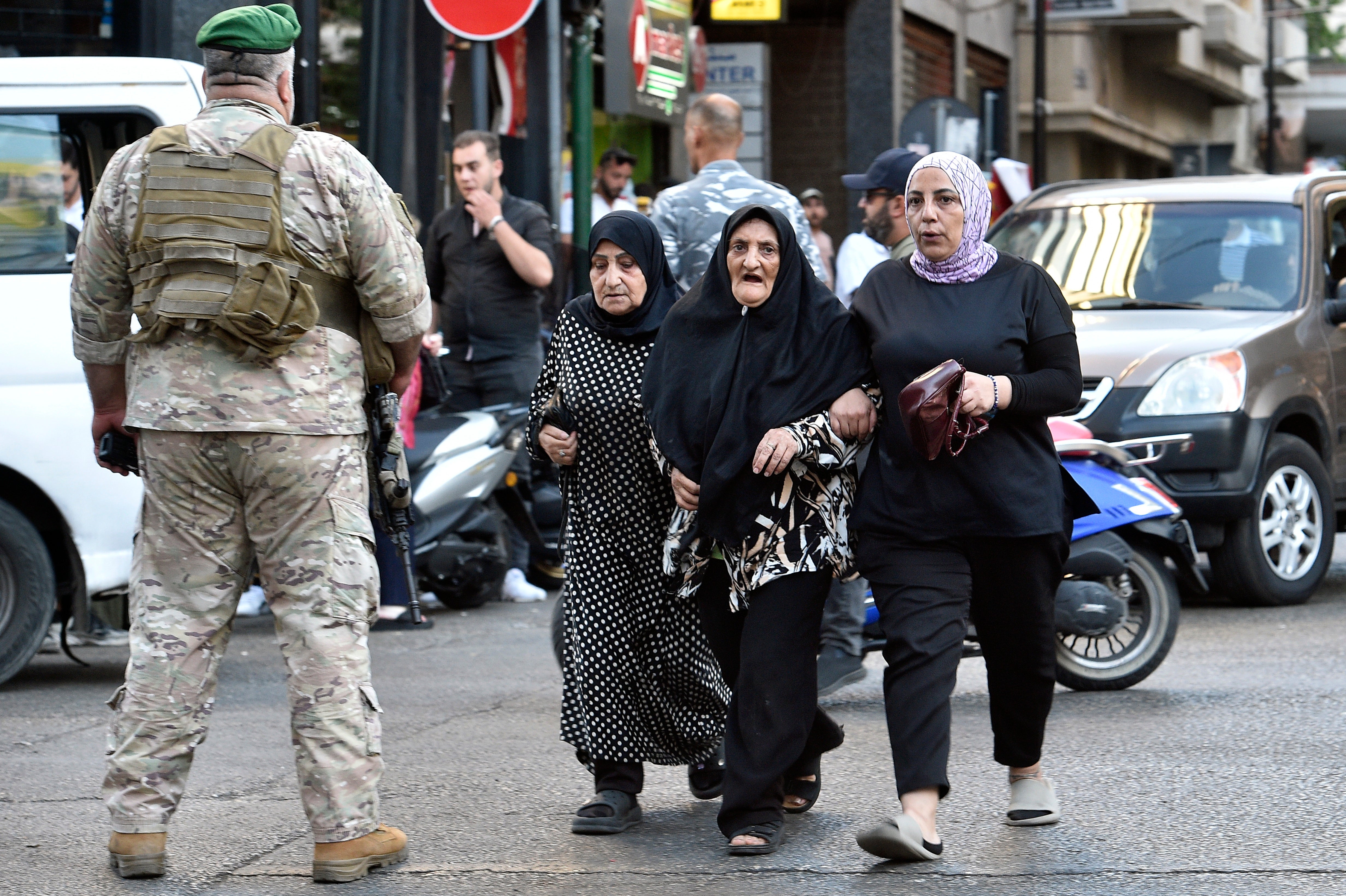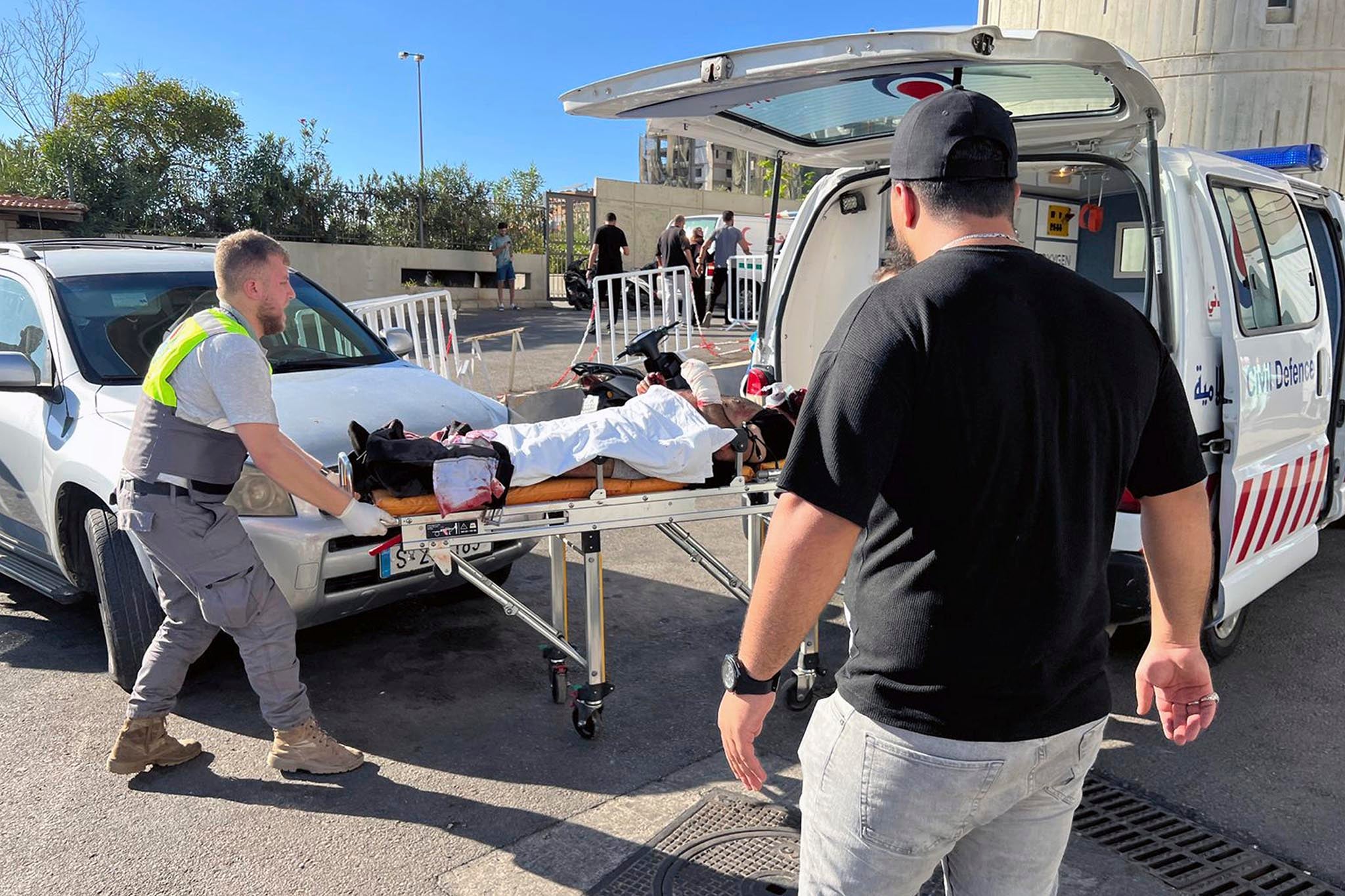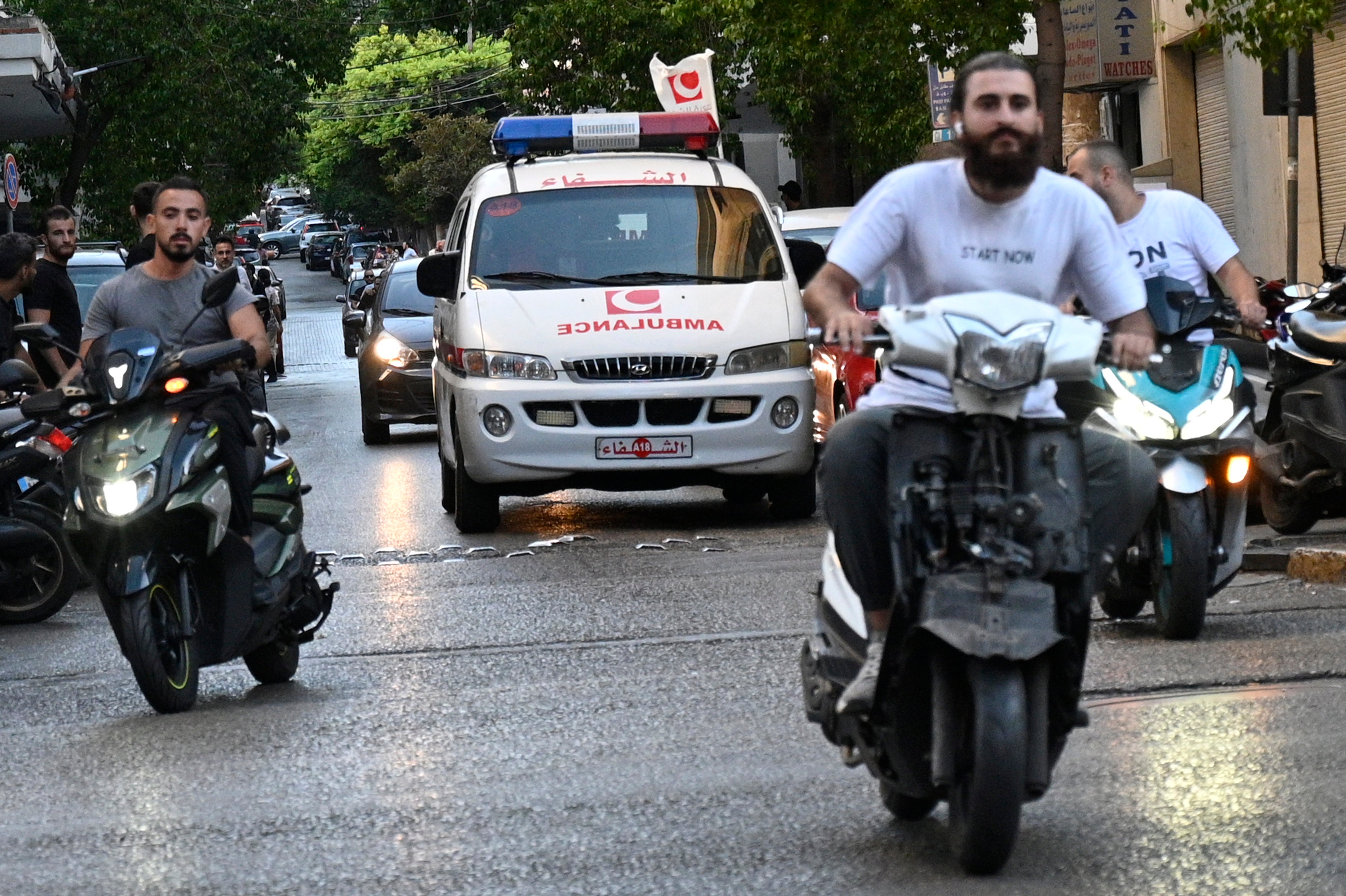Hezbollah has vowed to respond after nine people were killed and around 2,800 wounded following the simultaneous explosion of hundreds of electronic pagers used by the militia to communicate.
The group claimed the attack, which struck at 3.30pm local time, was perpetrated by Israel, an allegation that Israel refused to address, in keeping with its policy on assaults happening outside of its own territory.
The Lebanese health minister Firas al-Abyad said eleven people had been killed, including an eight-year-old girl, after the pagers exploded across Lebanon and in the Syrian capital of Damascus, where Hezbollah have stationed some of its members. Another 4,000 were wounded, the minister said, including 400 who were critically injured.
The pagers that exploded had apparently been acquired by Hezbollah after the group’s leader ordered members in February to stop using cellphones, warning they could be tracked by Israeli intelligence.
“After examining all the facts, current data and available information about the sinful attack that took place this afternoon, we hold the Israeli enemy fully responsible for this criminal aggression that also targeted civilians,” Hezbollah said in a statement on Tuesday evening.
“This treacherous and criminal enemy will certainly receive its just retribution for this sinful aggression from where it expects and from where it does not expect, and God is witness to what we say.”
The United States said it had no involvement in the blasts in Lebanon as it renewed calls for a diplomatic solution to tensions between Israel and Lebanon.
The United Nations special coordinator for Lebanon Jeanine Hennis-Plasschaert, meanwhile, condemned the attack, describing it as an “extremely concerning escalation”.

She added that she “urges all concerned actors to refrain from any further action … which could trigger a wider conflagration that nobody can afford”.
A Hezbollah official, speaking on condition of anonymity, said the detonation of the pagers was the “biggest security breach” the group had been subjected to in nearly a year of war with Israel.
While the majority of the explosions was concentrated in the southern suburbs of Beirut, Iran’s military-affiliated media site Saberin News claimed that seven people had been killed in Syria, where many Hezbollah members are based. The outlet said they had been killed in the Damascus neighbourhood of Seyedah Zeinab, a few miles from the Iranian embassy.
The Syrian Observatory for Human Rights also reported that a number of casualties had arrived in hospitals around Damascus. They said 14 people had been wounded.
The Independent could not immediately verify these claims.
The Iranian ambassador to Lebanon, Mojtaba Amani, was injured by one of the blasts, Iran’s Mehr news agency reported.
Another Hezbollah official from the group said the son of one of their prominent legislators, Ali Ammar Mahdi, was killed when the device he was carrying exploded.
Mr al-Abyad, the Lebanese health minister, speaking at an emergency press conference in Beirut, reported that around 100 hospitals received casualties from Tuesday’s attack. The majority of those injured suffered wounds to the face or arms, he added, and in some cases the abdomen.

The pagers that detonated were the latest model brought in by Hezbollah in recent months, three security sources said.
Hezbollah officials speculated that the devices may have been contaminated with malware that caused the pagers to overheat and explode. Another theory suggests that a charge had been manually placed in the devices and detonated remotely. That would suggest that whoever conducted the attack had access to the shipment of pagers prior to their delivery to Hezbollah.
There was no immediate comment from the Israeli military, which has been exchanging fire with Hezbollah since last October in parallel with it’s war with Hamas, who control the Gaza Strip. In a subsequent statement to The Independent, the Israeli military said they were “refraining from commenting”.
The explosions come after Israel claimed it had killed top Hezbollah commander Fuad Shukr in an airstrike in Beirut in July. Several other senior officials were killed on strikes on the Iranian embassy in the Syrian capital of Damascus.
Hezbollah, which controls southern Lebanon, forms part of Iran’s so-called “axis of resistance”, which opposes Western and Israeli influence in the region.
The group opened a second front against Israel a day after the war in the Gaza Strip began, triggered by a Hamas attack inside Israel on 7 October.
Hamas, also backed by Tehran, killed around 1,200 people, with another 251 taken hostage. In response, Israel has bombarded Gaza from the air and ground.
More than 41,000 Palestinians have been killed in the offensive, health officials in the strip have said. It has displaced nearly 90 per cent of the territory’s 2.3 million population.

On Tuesday, Israeli Prime Minister Benjamin Netanyahu‘s office said the safe return of its citizens to their homes near the border with Lebanon had been added to the government’s formal war aims.
“The Security Cabinet has updated the objectives of the war to include the following: Returning the residents of the north securely to their homes. Israel will continue to act to implement this objective,” a statement said.
Tens of thousands of people have been displaced from towns and villages on both sides of the border by near-daily exchanges between the Israeli military and Hezbollah.

Israel has said it would prefer a diplomatic solution that would see Hezbollah moved farther back from the border.
However, Hezbollah, which also says it wants to avoid all-out conflict, says that only an end to the war in Gaza will stop the fighting.
Gaza ceasefire efforts are deadlocked after months of faltering talks mediated by Qatar, Egypt and the United States.
The “axis of resistance” comprises a group of violent proxies across Yemen, Syria, Iraq, Iran, Lebanon and Palestine, coordinated by Iran’s Quds Force, the foreign arm of the IRGC.
The Quds Force’s aim is to export Iran’s 1979 Islamic revolution abroad. The US assassinated the former head of the Quds Force, Qassem Solemaini, in January 2020. Hezbollah, the most powerful group in the axis, boasts 100,000 fighters.

